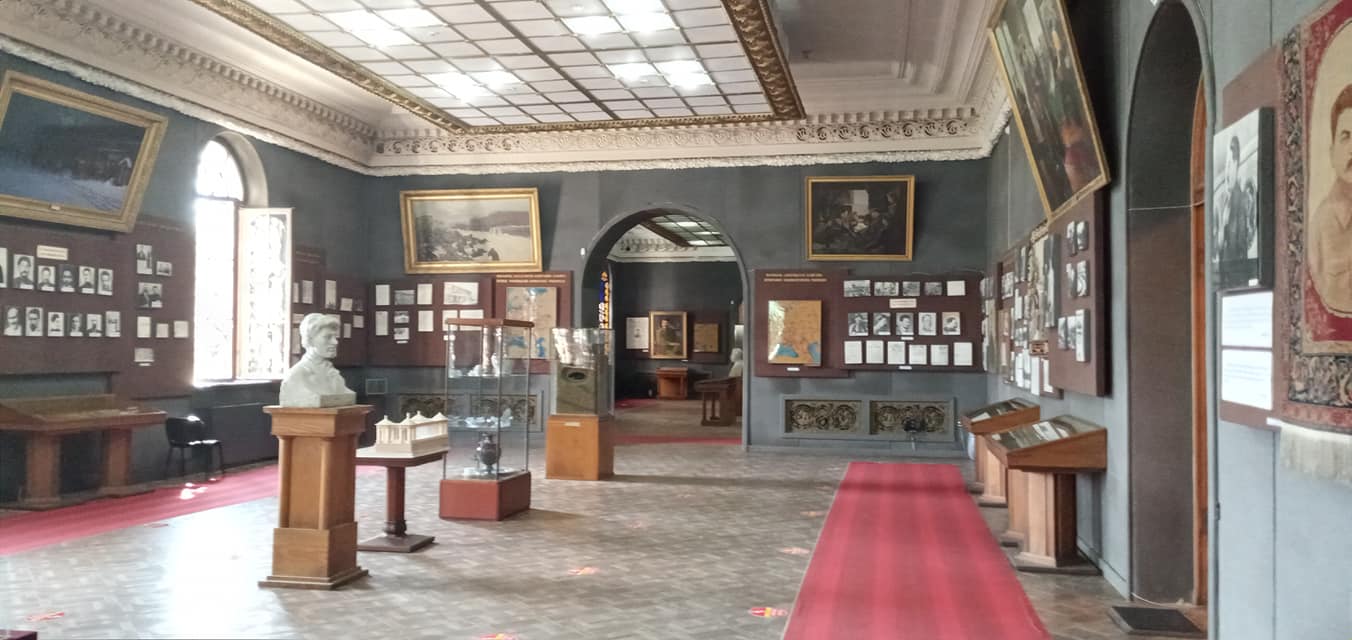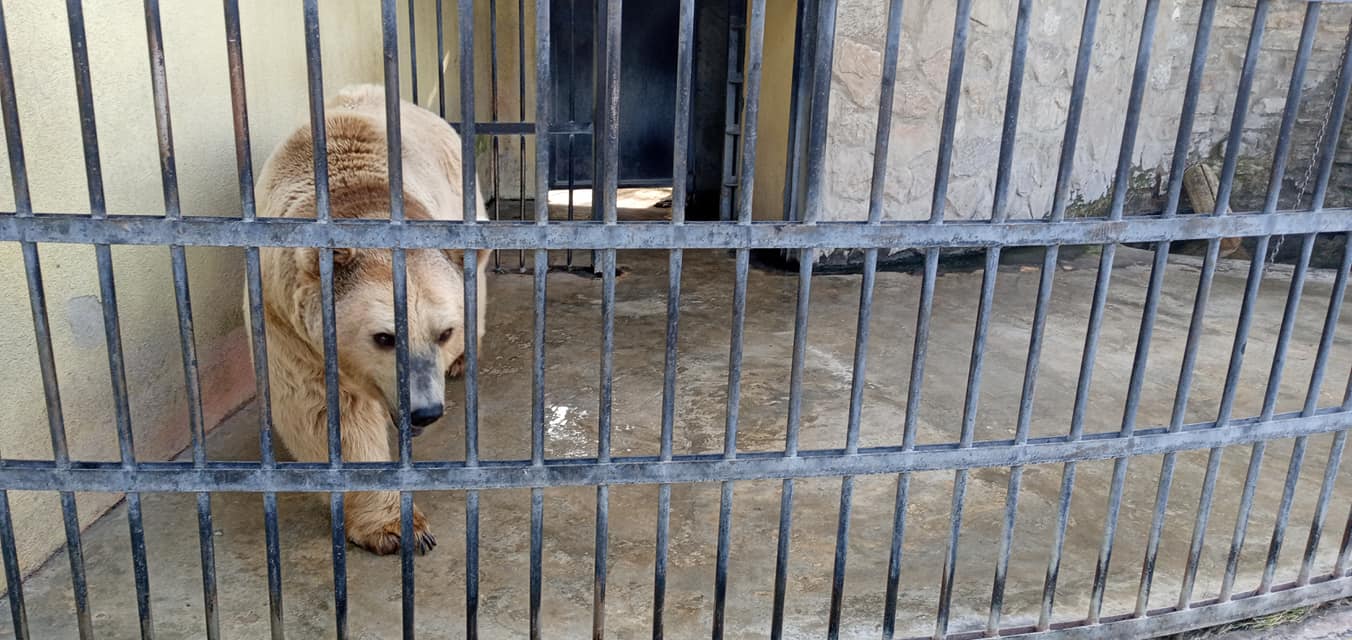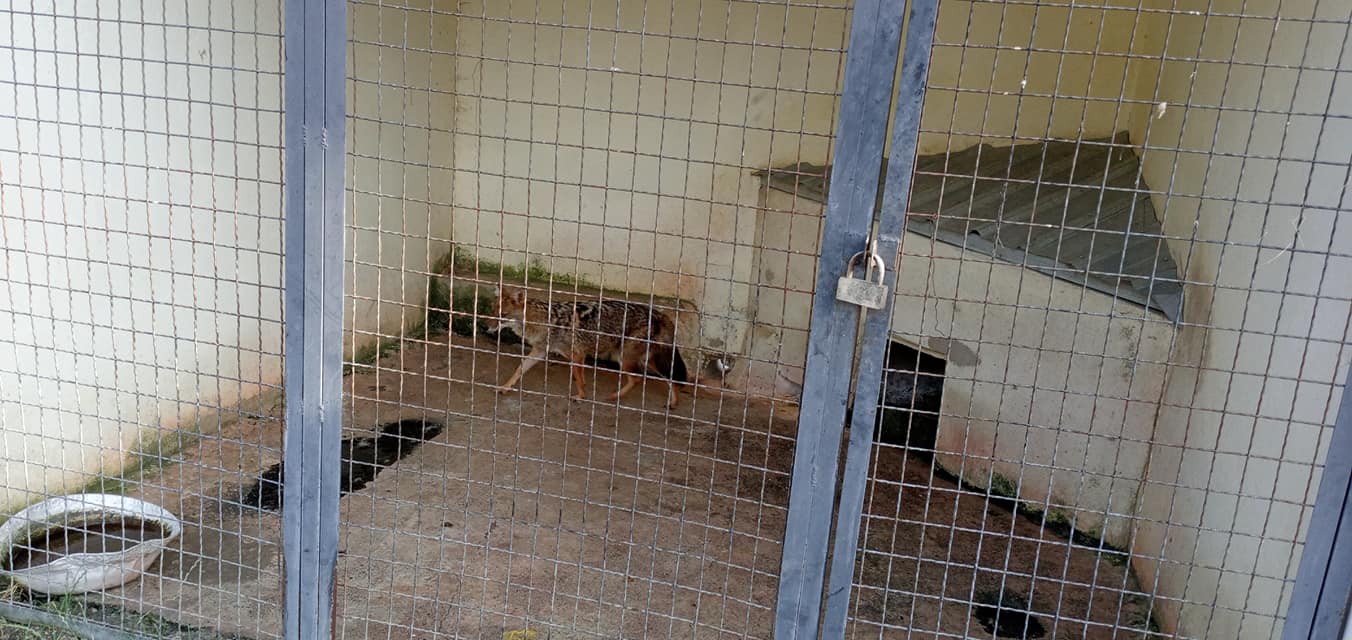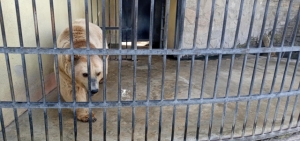The Hidden Shame of Gori, And No, It’s Not Stalin
OP-ED
Last weekend, I took time to explore Gori. Just an hour by shared taxi outside Tbilisi, this ancient city is close enough to home that I’ve been putting it off for years, passing through on the way to the west and each time thinking, “Oh, I must go and see what’s there.” No more! Donning a face-mask and braving the heat, I set out from my comfortable guest house near the Akhalibagi garden to explore, apparently the only tourist on the streets that day.
The first stop: of course, the renowned Stalin Museum. I taught the late Nika Rurua, Minister of Culture under ex-President Misha Saakashvili. I remember in one of our classes we were talking about the latest law banning the display of fascist symbols and the iconizing of people such as Stalin. It led to a lot of Stalin statues being removed. But not in Gori, it seems, as I saw two standing in public spaces while there. Another thing we talked about in that class was the planned upgrade to the museum named after the 20th century dictator, with the aims of turning it from a hero-worshipping look at how he came to power, to a balanced view that shines light on the atrocities he committed. It seems the locals were against it, as what I saw showed only his life: from school and tutorship under Lenin, to his rise to fame, fortune and devastating power.

Stalin’s death mask, on a plinth surrounded by red carpet and pompous white marble columns, was the eeriest exhibit there, as was a white dove embroidered in Italy as a gift for the dictator, claiming him a “Champion of Peace”. An enlightening glimpse into a different world, with no mention of the purgings and genocides. Indeed, most older locals will wax lyrical about Stalin and his times. For a look at the darker side of Soviet rule, head to the Soviet Occupation Museum on Rustaveli Avenue in Tbilisi.
The next stage of my walk took me up to Gori Fortress, dated to the 13th century and offering a great 360-degree view and huge potential but, like most of Gori, with half-finished construction and no historical signs to describe the significance of the place (it survived a 9-month siege in the 16th century!). On the way, I’d also passed a few buildings still scarred by bullet holes from the renowned 2008 Russo-Georgian war. Again, no detailed signs to add meaning to the poignant sight. The Museum of War and the Entho Museum had also been closed for renovation prior to the borders reopening to foreign tourists. The nicest part of my walk was the renovated ‘Old Gori’, with its buildings of red-brick and carved wooden balconies, reminiscent of the works done to restore Old Tbilisi, Sighnaghi and Mestia, housing souvenir shops, salons and sporting goods stores.

Then my feet closed the circle on my day of exploring by taking me to one of Gori’s two parks, Akhalibagi (New Garden). Roses, trees and a fountain were a welcome sight after the hot concrete of the city streets, though another Stalin statue, nestled in a copse of bushes there, was a surprise. On warm summer evenings, this and the fortress are THE place to be with friends and family. So what I saw next was a huge disappointment to my otherwise “it’s got brilliant potential and makes a nice day-trip” opinion of the city until that point. Because the shame of Gori referred to in the above headline is its “zoo”.
A semi-circle of barred low concrete buildings, open and free to access, greets visitors. The largest inhabitant of this depressing space is a native brown bear. Indeed, that’s all we know about him or her- as the sign shows just the words ‘Brown Bear,’ in Georgian and English, no further description. What I can easily see, though, is the poor bear’s distress as it paces in tight circles around its 8 sq m cage, sliding on the smelly wet cement that makes its home. Every time it gets to the narrow end of its cage, where a shallow, dirty pool of water sits, it shakes its head, then begins to circle again, pausing only once to look at me with doleful eyes (see video below). The next two cages are empty; the one after is unfurnished save for a tree branch leading from the concrete floor to an upper platform. Hunched in the corner near my feet is a big bundle of feathers: a vulture, I ascertain from the printed sign, though it is the tiredest looking bird-of-prey I’ve ever seen. I wonder if it ever tries to stretch its wings.

A noise distracts me from the sad sight: a family of six African goats trots out of their room into a fenced area of maybe 10-15 sq m, to munch on the hay scattered around their enclosure. They seem the happiest of the animals I’ve seen so far, though they too are naturally deserving of much more space to thrive in; trees and rocks to play among and rest in the shade of.

Next is a 4 sq m cage whose sign reads “Fox”, though he must be hiding in the dark and dismal concrete house in the back corner, as there’s no sign of him. His neighbor, in a cage the same size, is a jackel, who, like the bear, is also circling his cage, despairing of an escape. There is nowhere for him to climb or hide except his triangular concrete shelter in the corner. Beside him is a slightly larger, but equally sparse cage, labelled “Pigeons.” This one made me think ironically of humanity: inside were two pigeons, there by choice though there was an opening to allow them to come and go into the city. The birds next door were not free to come and go: a Japanese chicken, rooster, and a beautifully colored pheasant strutting their stuff around a closed cage equal in size to that of the pigeons.
What I saw in Gori struck me as a disgraceful and totally pointless example of cruelty to animals. It cannot be claimed they are there for educational purposes: I already mentioned the lack of informative signs, and no personnel were present to talk to. Nor can it be claimed they are there for entertainment: what fun can a person get from watching animals pace in circles in a habitat so different in size and character from what they should have been living in?
Investigation on my return to Tbilisi revealed that the Georgian animal rights supporters, among them the Georgian Society for the Protection and Safety of Animals (GSPSA), have been fighting for better conditions for these animals, ideally the closure of the Gori Mini-Zoo, since 2012, when journalist Shalva Ramishvili reported that the head of Gori City Hall and the director of the zoo had allegedly, two years’ prior, killed and eaten one of the three bears captive there.
I spoke to Temur Lachkepiani of the Georgian Federation for the Protection of Animals (GFPA) who was amongst those, including Teimuraz Tsikoridze, Chairman of the GSPSA, to petition the Gori authorities and Ministry of Environment to shut the mini-zoo down back in 2016. GSPSA representatives went to Gori Mini-Zoo in 2016 following a notification from the PETA (People for the Ethical Treatment of Animals) Investigation Division asking them to look into the situation, provide information, and appropriately respond in case of a violation of animal care rules. This the GSPSA representatives did, interviewing the zoo director and staff. It was found that Gori zoo management was “doing its best to facilitate normal conditions for animals” and all animals were found to be “in good health, while hygienic standards were being followed”.
After many letters sent back and forth, Gori City Hall opened a tender to increase the size of the cages. Clearly, nothing came of it.
“The problem in Georgia is the lack of a Law on Animal Rights,” Temur told me. “But in this case, we can try taking Gori to court for violation of the law referring to the illegality of removing animals from the wild and holding them in captivity. Specifically, Article 85, Paragraphs 3 and 4.” [The bear I saw there was brought in from the Georgian mountains after a feast was allegedly made of his predecessor].

If the Gori Mini-Zoo were to close, the bear would likely go to the Bear Shelter, and the other animals to Tbilisi Zoo. With that in mind, we contacted Zurab Gurielidze, the Director of Tbilisi Zoo, who says he is aware of the small enclosures the animals are kept in in Gori.
“As I saw during my visit 3-4 years ago, the main problem was the size of the cages, especially that of the bear, though the living conditions of the animals in terms of food and sanitary norms weren’t bad. At the time, the administration was planning to build larger cages for the zoo residents,” he told GEORGIA TODAY.
When informed that this had not been done, he insisted the responsibility was on Gori to maintain its zoo, but that the animals “should certainly be provided with better living conditions.”
“Tbilisi Zoo is ready to provide Gori with all the necessary consultations and to share experience in this process. Closure of the Gori zoo and transfer of the animals to other places is no solution,” Gurielidze claimed. “It would be difficult for the animals to adapt to new conditions and ‘socialize’ with the old residents of Tbilisi Zoo. Provision of an appropriate environment for animals in zoos is not only a local but a global problem. However, improvement of their living conditions is possible, and it can be achieved through the relevant efforts. In Gori’s case, larger cages should be set up for animals on the spot.”
We then reached out to Gori City Hall for a comment, and received this from Bachana Gvianishvili, the Director of Public Amenities in Gori municipality:
“We do not accept the opinion that the residents of the Gori Mini-Zoo are kept in inappropriate conditions and in small enclosures, except the bear. The cages are cleaned daily and we believe that the situation is satisfactory in this regard. The only recommendation we received from Tbilisi Zoo Director Zurab Gurielidze was to transfer the bear to a new, larger cage, at which point a project was launched to build a new enclosure, and a tender was announced. The construction of the new cage has already been completed.
“An irrigation system is being arranged in the recreational park and once finished, the territory in front of the new cage will have a trail around it, after which, with the help of specialists, we will move the bear to the new enclosure.
“We believe that the existence of the Mini-Zoo in Gori is important not only for the local population, but also for the citizens of nearby municipalities- Kareli, Kaspi, Khashuri. This is confirmed by the large number of visitors who come to the Mini-Zoo every day.”
My visceral reaction to the Gori animals’ plight led me to post photos and videos on facebook. It soon caught the attention of international animal rights supporters, among them Laura Marie Vølpert Momme of DIGU, a Danish animal welfare organization, who shared the post, noting: “It is a tragic and deeply disturbing sight that after years of struggle, [Gori Zoo] has still not been closed! DIGU has contacted various organizations around Europe hoping for assistance. Let's get these animals out and put pressure on [the authorities] by spreading the word!”
Indeed, that is my hope. That by once again shining a spotlight on this zoo, a shameful corner of an otherwise historical and important city, it will spur the authorities to act in the animals’ favor, because, if anything, this coronavirus period has taught me, and many of us, an even greater respect for nature and a better understanding of our place in the great scheme of things. It has also enforced my personal belief that we, the people of the 21st century, have no need or right to use animals for food, clothing, entertainment or other purposes. Let us protect wildlife by letting it thrive where it belongs: in the wild, with us visiting it in mobile cages of our own if we must. Our children can be taught to admire and respect animal kind from a distance. Seeing a bear pace a small, dirty cage can teach them nothing of the nature of our fellow earthlings, though it certainly highlights the darker side of some humans.
By Katie Ruth Davies, with Ana Dumbadze
To donate to the GSPCA and help in their fight for Animal Rights in Georgia, click here.












